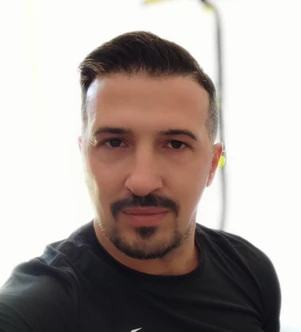Resourcefulness, passion and the encounter with Incomedia: Simone's story
Published by Incomedia in Success stories · Wednesday 24 May 2023
Here at Incomedia, we know that by providing people with software tools to bring their projects to life, we actually step into their lives: in some way we inspire them, we encourage them, we help them do what it takes to achieve the goals they have set for themselves.
 My name is Simone Scigliuzzi, and I was born in 1975.
My name is Simone Scigliuzzi, and I was born in 1975.
Sometimes, however, by continuing to speak generically of "people", everything becomes a bit too abstract... Luckily, you guys take care of making everything concrete and full of meaning again.
This time, it was Simone Scigliuzzi's turn, programmer from Castelfranco Emilia. Today, Simone no longer needs our software but, over 20 years ago, coming across one of our software solutions changed his life. It makes us proud to know that we have been the inspiration behind his career.
Here, then, is Simone's story, in his own words.
Simone today: an established programmer
 My name is Simone Scigliuzzi, and I was born in 1975.
My name is Simone Scigliuzzi, and I was born in 1975.Anyone who knows me today knows that:
- I've been a programmer for over 20 years;
- I develop websites, portals, Apps for Android/iOS, PC software, Apps for Facebook;
- I'm a CTO and a full-stack developer.
Which means I do programming in all stages of the software development life cycle, even leading my own team.
But who was Simone, before becoming a programmer? And what inspired him to become one?
For this we have to take a step back in time. A "small" step back to 1999.
Simone yesterday: a turner with a passion
I was a worker back in those days. A turner, more precisely. In my spare time I cultivated my passion for music, playing the guitar and composing songs.
One day I got the idea to buy a personal computer and use it to record my music.
I'd never had a PC before but I learned quickly: I fitted a pretty powerful sound card and started trying to figure out how to record my own sounds.
From time to time I bought computer magazines. You know, like PC Magazine. Every time a title caught my attention, passing in front of a newsstand, I bought one.
One day, on the CD included with one of these magazines, I found a demo version of Incomedia 5.0: "a tool for creating multimedia presentations autonomously".
I thought, "It can't be a simple Power Point clone. It must have something more!". So I installed it and started tinkering with it.
The discovery of Incomedia 5.0
It wasn't difficult to learn how to navigate this program: Incomedia Integrator allowed you to create a presentation, where each slide (window or page) was a "node".
Once a node was created, you could insert movies, sounds, images, text and links that looked like buttons, then link different actions to them: jump between nodes, to navigate within the presentation; start playing a video or audio file; open your web browser to a certain site or email client; start printing a window; or even launching an external program.
To each button you could link up to 4 actions that were performed consecutively, one after the other.
Everything could then be reproduced by an integrated player. So you could work on the presentation and then run it as an end user.
There was also a tool for exporting presentations to floppy or CD-ROM.
I remember thinking, "Wow! This must be something like making actual PC programs."
The first project
I started fantasizing about what my first project could be, and... BAM! The idea! A handbook of guitar chords!
Have you ever seen a handbook of chords? It's one of those books full of drawings showing how to play chords on the guitar.
Well, I wanted to make a multimedia one. Multimedia and interactive.
It was an ambitious project - I know - that would require a lot of work. Just think that there are 12 main chords (C, C#, D, D#... up to B) and that for each chord there are various extensions (major, minor, seventh, minor seventh, fourth, etc.).
Each with a different fingering.
So I would have needed at least 12 nodes - one for each chord - where I would have illustrated all the extensions of the chord with their fingerings, creating a real handbook.
The names of the notes, at the top of each node, would allow you to turn the page with simple node jumps.
For drawing the chords, bitmaps with the "grid" drawn by the frets and the guitar strings would have sufficed – and "dots" superimposed on this grid would have represented the points where the strings should be pressed.
But not only that! I could have made these "dots" interactive, allowing them, when clicked, to reproduce the sound of that guitar string played on that precise fret.
Being a guitarist, I had already installed a tuner on my PC. So I also created a link to that program. In addition to leafing through guitar chords, with my handbook it would also have been possible to tune it.
And finally? Well, maybe the ability to print a chord page.
Well, my project idea was ready. All I had to do was work on it.
Getting to work
I patiently began to work on this idea. I worked on it for months. Every evening. Always late at night.
And the next morning, at work in the turning shop: maybe not really fresh and rested (even if I was a lot younger than I am today and full of energy), but certainly energized and excited for my project.
This Incomedia 5.0 was quite something. Working on it and seeing my project take shape was a great satisfaction: one that drives you to keep going.
The more I went on with my project, the more ideas came to mind about new things that I could add to my interactive multimedia handbook...
Until one day I began to run into the limits that a software for creating presentations would offer, compared to a program designed and written to do a very specific thing like a multimedia handbook.
"It's its nature," I thought. It is used to create presentations. And as advanced as it is, with tons of useful features, it's not a software for writing programs.
You never stop learning
I remembered a friend, a guy I'd played with a couple of times during some gigs. He was still in school at the time, and I remembered that for a social project he had programmed a text editor for the blind: a normal text editor, but with a "talking" keyboard, which pronounced every single letter or character typed.
I asked him if by programming, it was really possible to do anything. And his answer was: "Yes but of course you have to know how to do it".
He recommended a couple of programming languages I could get started with and handed me a copy of the development environment (the software used to write computer code).
I installed it immediately and ran to the nearest bookstore. At the time it was not like now that you can find everything on the internet. Back then, the computer department in bookstores had shelves full of books, on all programming languages.
I bought one on Visual Basic 6. For beginners. Nice and big, so that it could take me as far as possible in studying this language.
I worked out a plan that turned out to be quite effective: I studied during the day, during my lunch break at the turning shop. In the evening, once in front of my PC, I put into practice what I had learned.
Once I finished that book I bought another one, and then another one, and then many others. Until the bookstores no longer carried programming books and I moved on to studying on the Web.
Happy ending
In 2004 I left the turning shop. After 4 years as a "hobby" programmer, I said goodbye to the engineering world, and my career as a programmer began there.
I fondly remember when this all began: Incomedia Integrator; good old Visual Basic 6; the esteem of colleagues on online forums; up to the first articles published in programming magazines, and everything that came after.
Today I program with over 80 programming languages; frameworks; databases; micro-services; REST APIs, and you never stop learning. New technology starts every day. More powerful every time.
And today, I feel that same satisfaction that I felt when I created my chords handbook project with Incomedia, on a daily basis: when I have to solve problems for work; find solutions; and create something from scratch giving space to all my creativity.
Would I recommend Incomedia products?
Of course! Whether you want to develop a project, for which you need powerful tools that, at the same time are easy to use; or whether you want to be inspired as it happened to me: by the work of someone who has put passion into doing it.

